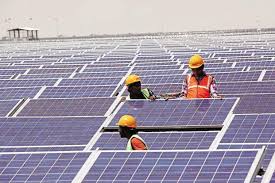
A new report by the Solar Energy Industries Association shows solar energy growth occurred in 2019 across the nation but not in Oklahoma, even as some legislators attempted to emphasize energy legislation.
The report showed solar accounted for nearly 40% of all new electricity generating capacity added nationally last year, which is the largest annual share in the history of the solar industry.
The U.S. solar market installed 13.3 GWdc of solar photovoltaic products which represented a 23% increase from 2018. On the down side, non-residential PV dropped in 2019.
Oklahoma’s ranking for solar installations dropped from 43rd in 2018 to 47th nationally last year. In 2017, the state ranked 34.

“It is disappointing to see Oklahoma fall to 47th, but we believe it will rebound,” said Lindsey A. Pever, Vice President of the Oklahoma Solar Association in an emailed statement to OK Energy Today.
“For one, one of our OSA members – a local solar rooftop installation company – has installed more than 800 systems in the last couple of years. While that number is exciting, we won’t see Oklahoma’s overall solar number increase until more solar rooftop companies can be successful like that one, and until our utilities get projects commercially operational.”
Few solar-related bills in the Oklahoma legislature have won approval in either the House or Senate, with many dying in committees without even being taken before the full House and/or Senate for a vote.
“We need a Republican leader in the House or Senate to acknowledge that solar is a way forward for our energy-rich state,” responded Peever. “This member of the controlling party needs to champion solar policies that will help grow the overall economy as well as to transition displaced workers as the world begins to invest in renewable energy.”
She said once more people realize that increased solar energy will mean lower utility bills and fewer emissions “and not a displacement of those working in oil and gas, we will find that champion.”
Pever said another issue facing the politics of solar energy is that false correlations between oil and gas and solar have been made.
” There will always be a place for oil and natural gas – solar does not cancel out those industries, especially not in Oklahoma. But in these times where the predominant additions to national grids are renewables, and with solar growing across the country, the need for a trained workforce is imminent,” she concluded.
A forecast prepared by Wood Mackenzie predicted the U.S. will see a 47% annual growth in 2020 and total installed solar energy capacity will more than double over the next five years. The forecast said by 2025, one in every three residential solar systems and one in every four nonresidential solar systems will be paired with energy storage.




